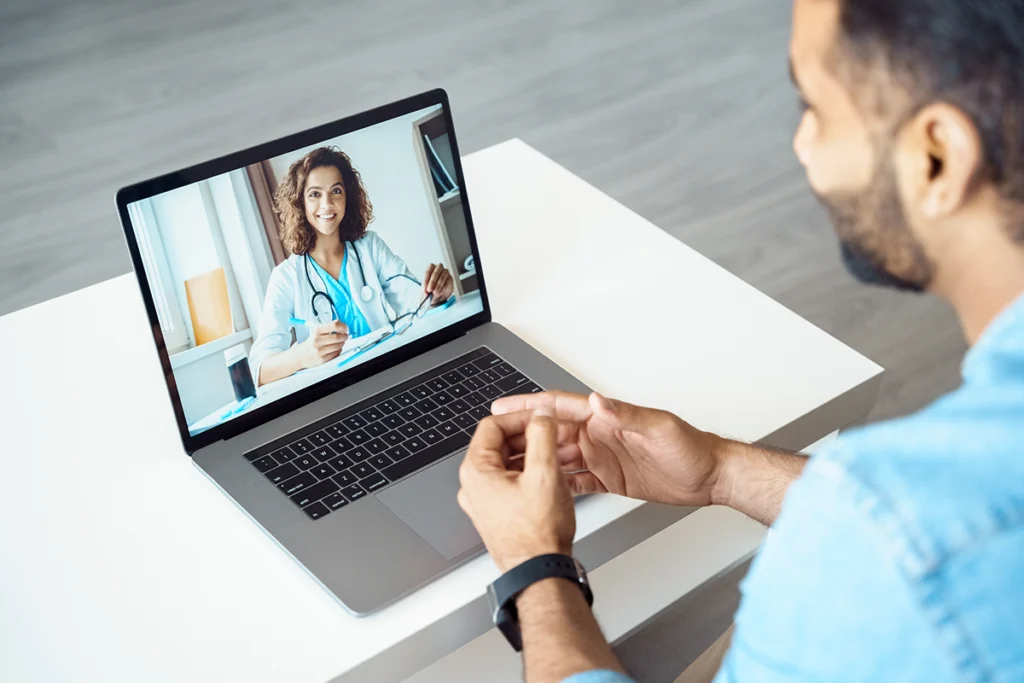Table of Contents
For the higher education community, Asian Pacific American Heritage Month is a chance to appreciate the many ways the academic experience is enriched by the contributions from Asian Americans and Pacific Islanders (AAPI). Given the surge in hate incidents directed toward the AAPI community in the past year, higher education leaders can also offer help and inspire hope by supporting the mental health and well-being of AAPI college students.
Since the year 2000, AAPI college student enrollment increased 36%. Today, Asian American students and Pacific Islander students comprise nearly 20% of college students at four-year institutions and 14% of students at two-year institutions. While the AAPI population continues to grow on college campuses across America, research shows that they have the lowest help-seeking rate of any ethnicity, with only two out of 10 with mental illness receiving treatment.
Why don’t most AAPIs seek help for mental illness?
Culturally specific attitudes among AAPIs that stigmatize help-seeking include:
1. Language barriers
Over 13 million U.S. residents were born in Asia, representing over 30% of the total foreign-born population in the nation. The disparity between the high need and poor availability of linguistically and culturally appropriate mental health service providers is a significant gap in accessing treatment.
2. Stigma
Mental illness has often been considered a weakness or a sign of poor parenting — a source of shame to the individual and to the household. The desire to protect the family’s reputation often discourages help-seeking until there is a crisis. According to a Substance Abuse and Mental Health Data Archive (SAMHDA) survey, AAPIs resist getting mental health treatment because they don’t want others to find out, confidentiality concerns, and fear of peers’ negative opinions.
3. Model minority myth
Asian American communities are burdened with the “model minority” stereotype — a prevalent and misleading assumption that depicts AAPIs as uniformly well-adjusted, attaining more socioeconomic success than other minority groups through strong work ethic, conforming to social norms, and excelling academically — particularly in math. The AAPI community, however, is highly diverse across subgroups in rates of socioeconomic, physical health, and mental health challenges. The social and familial pressure created by this stereotype prevents community members from seeking mental health resources
4. Immigration status
5. Insurance coverage
Concerns over the high cost of mental health care also led to lower rates of help-seeking. Some groups within the AAPI community face disparities in coverage — Native Hawaiian or Other Pacific Islander (NHOPI) populations have a 9.3% uninsured rate compared to 6.8% for Asian American communities.
6. Religion
Spirituality and faith have an influence on mental health, especially for the AAPI community in which religious diversity is a distinguishing characteristic. Faith communities often offer a built-in social support system. However, religious communities may also perpetuate stigma around mental illness that can delay treatment in some instances.
The cumulative effect of these issues is that Asian Americans are three times less likely than White people to seek mental health services. For higher education, it’s critical that communication and engagement with AAPI students is made to help break through these barriers to health and well-being.
How is COVID-19 affecting AAPI Students?
News and reports from social media have documented widespread instances of anti-Asian racism and xenophobia worldwide stemming from the origin of the COVID-19 pandemic being pinpointed to Wuhan, China. In the U.S., the FBI warned of a surge in hate crimes targeting Asian Americans, and the U.S. Department of Justice with the U.S. Department of Education published guidance for confronting the rising COVID-19-related anti-Asian violence in schools.
Sadly, blaming a particular ethnic group during an infectious disease outbreak is common. During the 1853 yellow fever epidemic in the U.S., European immigrants were the targets of stigmatization. During the SARS outbreak that originated in China, East Asians were the target of hate incidents. And Africans were targeted when Ebola emerged in 2014. For this reason, the World Health Organization (WHO) opted against denoting a geographic location when officially naming the coronavirus. Still, with some choosing to refer to the disease as the “Wuhan virus,” anti-Asian racism continued.
President Joe Biden said there have been “…vicious hate crimes against Asian Americans, who’ve been attacked, harassed, blamed, and scapegoated … It’s wrong, it’s un-American, and it must stop.”
Source: NBC News
The experiences of AAPI college students who have been discriminated against and harassed reveal how fear has permeated America during the pandemic. Arguably, the damage caused by this racism could rival COVDI-19 itself. In fact, research shows experiencing race-based discrimination during infectious disease outbreaks increase mental health problems.
Generally, anxiety, depression, sleep disruption, and thoughts of suicide increased for young adults throughout the pandemic — 56% of young adults ages 18 to 24 reported symptoms of anxiety or depressive disorder compared to 49% of adults ages 25 to 49, and 39% of adults ages 50 to 64. But the amplified impact of the rise in anti-Asian hate crimes coupled with a reticence to seek help makes it especially difficult for AAPI students to care for their mental health and well-being.
How can higher education support AAPI students?
College and university leaders, educators, and staff must move beyond platitudes to support AAPI students. Moving forward, here are some considerations for higher education to ensure AAPI students are heard and supported:
- Review college curriculum to determine where multicultural infusions are needed.
- Deconstruct stereotypes by highlighting the achievements and struggles AAPIs have historically experienced.
- Allocate resources for anti-bias and anti-racism professional development.
- Provide opportunities for AAPI students to tell their stories.
“Here is the truth. Racism exists in America. Xenophobia exists in America. Anti-Semitism, Islamophobia, homophobia, transphobia, it all exists. And so, the work to address injustice, wherever it exists, remains the work ahead.”
Kamala Harris, Vice President of the U.S.A
Source: Fox News
Discover how telehealth supports your students
Campus resources to support the AAPI community
AAPI students need the support of their college community. Here are resources campus leaders can make available to the AAPI campus community:
- Anxiety and Depression Association of America
Dedicated to prevention and treatment of anxiety, depression, OCD, PTSD, and co-occurring disorders through education, practice, and research - Asian American Health Initiative
Montgomery County Department of Health and Human Services Health and wellness initiative (available in Chinese, Hindi, Korean, Vietnamese) - Asian American Psychological Association
San Francisco-based non-profit advancing the mental health and wellbeing of AAPIs through research, professional practice, education, and policy - Asian Mental Health Collective
Non-profit organization destigmatizing mental health within the AAPI community - Asian Pride Project
Nonprofit supporting LGBTQ Asian Americans and Pacific Islander communities through the arts - Chinese-American Family Alliance for Mental Health
New York-based nonprofit promoting self-empowerment and mutual support among Chinese-American caregivers of individuals with mental illness - Chinese-American Sunshine House
Brooklyn-based nonprofit providing awareness programs to Chinese-American families - Each Mind Matters
Mental health support guide for Chinese-American communities - GAPIMNY
Empowering queer and trans-AAPIs - Letters to Strangers
Nonprofit outreach destigmatizing mental illness and increasing access to affordable, quality treatment for youth aged 13 to 24 - Mental Health Association for Chinese Communities
California-based nonprofit raising awareness of mental health within the Chinese community through advocacy, education, research, webinars, and support - MedlinePlus
Free service provided by National Library of Medicine of the National Institutes of Health providing health and wellness information in multiple languages (20 AAPI languages) - National Asian American Pacific Islander Mental Health Association (NAAPIMHA)
Nonprofit promoting the mental health and wellbeing of AAPIs - National Queer Asian Pacific Islander Alliance (NQAPIA)
Federation of LGBTQ AAPI organizations — Asian Americans advancing justice - Psychology Today
A searchable database of therapists, psychiatrists, and treatment facilities (includes a directory of Asian therapists)
What is the role of telehealth in supporting AAPI students?
Care delivered through telehealth reduces the stigma of seeking the medical and mental health care that AAPI students need. Plus, it’s available 24/7/365. And when your AAPI students get the necessary care at the time that it’s needed, there’s a positive effect on their health and wellness. And that positive effect impacts your campus’ student engagement and retention.
“Coronavirus has fundamentally changed everything about how higher education supports students and about how people are accessing health care. Telehealth is no longer a luxury. It’s more of an imperative.” Luke Hejl, CEO and Co-founder of TimelyCare
Luke Hejl, CEO and Co-founder of TimelyCare
Source: Dallas Morning News
Contact TimelyCare to learn how telehealth for physical and mental health can make a difference in the lives of your students.
Let's Talk About Student Health and Well-Being
Our experts are ready to learn more about your school and share how your campus can thrive by integrating telehealth.






